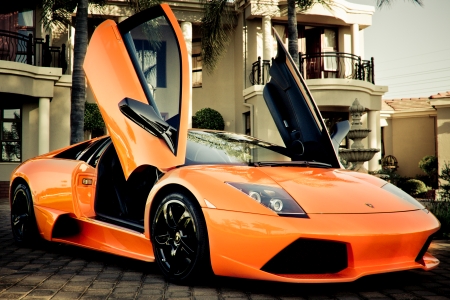Ever thought of dabbling in alternative investments?
Not sure what that means? Sounds a bit hokey?
Despite what you may think, there’s a wide and diverse range of investments that fall outside the ‘normal’ portfolio…and these alt-investments can be surprisingly lucrative and resistant to market volatility.
Today, I’d like to introduce you to a few of these assets, including one highly ‘liquid’ one that just stole headlines around the world.
First — what are alternative investments?
Instead of your normal mix of stocks, bonds, and term deposits, these other options let folks generate a return through other structures.
For example, you could buy a parcel of timberland.
It’s an old favourite of institutional investors and high-net worth individuals.
The premise is simple — as many Kiwis already know, land appreciates…which offers a long-term return on investment.
But the timber on the land also appreciates as the trees grow and become useful to logging companies.
Plus, if you’re clever, you could lease the land for recreational activities. (In the US, hunters are eager to find a new hunting ground…and are happy to pay for that access.)
You’ve got three income sources — land appreciation, timber value and recreational leasing — from a single asset.
An asset, by the way, which is physical and in limited supply.
Timberland won’t beat equities in terms of returns, but it’s valuable as a hedge against market volatility and a tool for diversification. Plus, the land is yours to enjoy as you wish…for hiking, fishing, skiing, whatever.
That’s certainly something you won’t get from your ‘normal’ investments.
Utility — the name of the game
One of the most exciting aspects of alt-investments is that they often have utility value on top of their store-of-value.
In other words, you can actually use these things; they’re not just IOUs.
For example, a Lamborghini Diablo. It’s a classic car from the ‘90s that could easily pass the 200 mph mark (320 kph). Only about 3,000 of these V12 devils were produced…so they’re prime picking for car collectors.
The MSRP would have run you about $335,000 if you’d bought new in ’99.
Today, you can pick up the same car for $475,000.
That’s a 42% return over 20 years.
And if there’s anything to the law of supply and demand, that value will continue to appreciate exponentially…as the 3,000 models are whittled down over the years. [openx slug=inpost]
But here’s the point — if you bought this alt-investment, you’d not only make a decent return in a volatility-resistant asset, you’d own a Lamborghini. It’s not just a pretty car to look at. You can drive it! You can take it to work. You can fly around the winding roads out in the wop-wops. You could make a quick run to the grocery store if you needed some milk.
It’s fun, useful, and value-generating. A great investment to add to the mix.
And I bet you it’ll be a much more interesting conversation topic than your Ordinary Shares in Westpac.
Other investments that fall in this category are watches, chinaware, jewellery, mid-century furniture, rare books, and…fine wine.
It’s that last one that recently found itself on the front page of newspapers around the world.
(But if you’re keen to hear more about the various alt-investments, you can check out my list of 12 top categories and their respective returns right here.)
16,889 bottles and the Transcendent Collector
A mysterious wine investor called the Transcendent Collector just purchased a lot of nearly 17,000 bottles of fine wine for a record-breaking $44 million.
The New Zealand Herald reports:
‘A collection of 16,889 bottles of high-end wines from an anonymous seller known only as the Transcendent Collector has set a sales record of £23 million (NZ$44m) at auction in Hong Kong.
‘Sotheby’s had predicted the three-day sale would fetch a total of US$26m (NZ$38m), a figure that would have already set a new world record for a single-owner wine collection.
‘The collection, which it described as being of “a scale the like of which has never been seen before”, included first-growth Bordeaux and grand cru Burgundies, as well as an extensive set of Dom Perignon champagnes dating as far back as 1926 and Krug vintages spanning six decades from the 1950s.’
This intriguing purchase marks the pinnacle of the ‘new wave’ of wine collectors who, you may be disappointed to hear, have no intention of drinking said wine.
Instead, these ageing bottles will sit in private cellars, developing a thickening patina of dust and mould.
(Yes, mould. The wine-cellar mould, Racodium cellare, is the cherry on top for discerning collectors of fine wine.)
However, the Transcendent Collector could pop open some of these bottles if he so wishes. At an average price of $2,600, it’d have to be quite the dinner party.
But that’s up to him. Sit on it or sip on it. That’s the freedom of alt-investments.
Best,
Taylor Kee
Editor, Money Morning New Zealand
PS: In Tuesday’s article, Why You Should Never Trust an Economist, I made a mistake when I said, ‘If we [truly understood economics], there wouldn’t be depressions or recessions. There would be full unemployment, high incomes, and stable prices. There’d be no bubbles, no scarcity, nothing to kill or die for…’ I meant to say ‘full employment‘! Sorry! (Full unemployment sounds either really fun or really terrible…)
